COWPOKE

NEWSDepartment of Animal & Food Sciences Oklahoma State University Summer 2022
Cowpoke News
Welcome to the Summer 2022 Edition of Cowpoke News! We hope you enjoy reading about the Oklahoma State University Department of Animal and Food Sciences. Cowpoke News is published multiple times a year. We strive to keep students, alumni and friends of the department informed about our activities and successes.
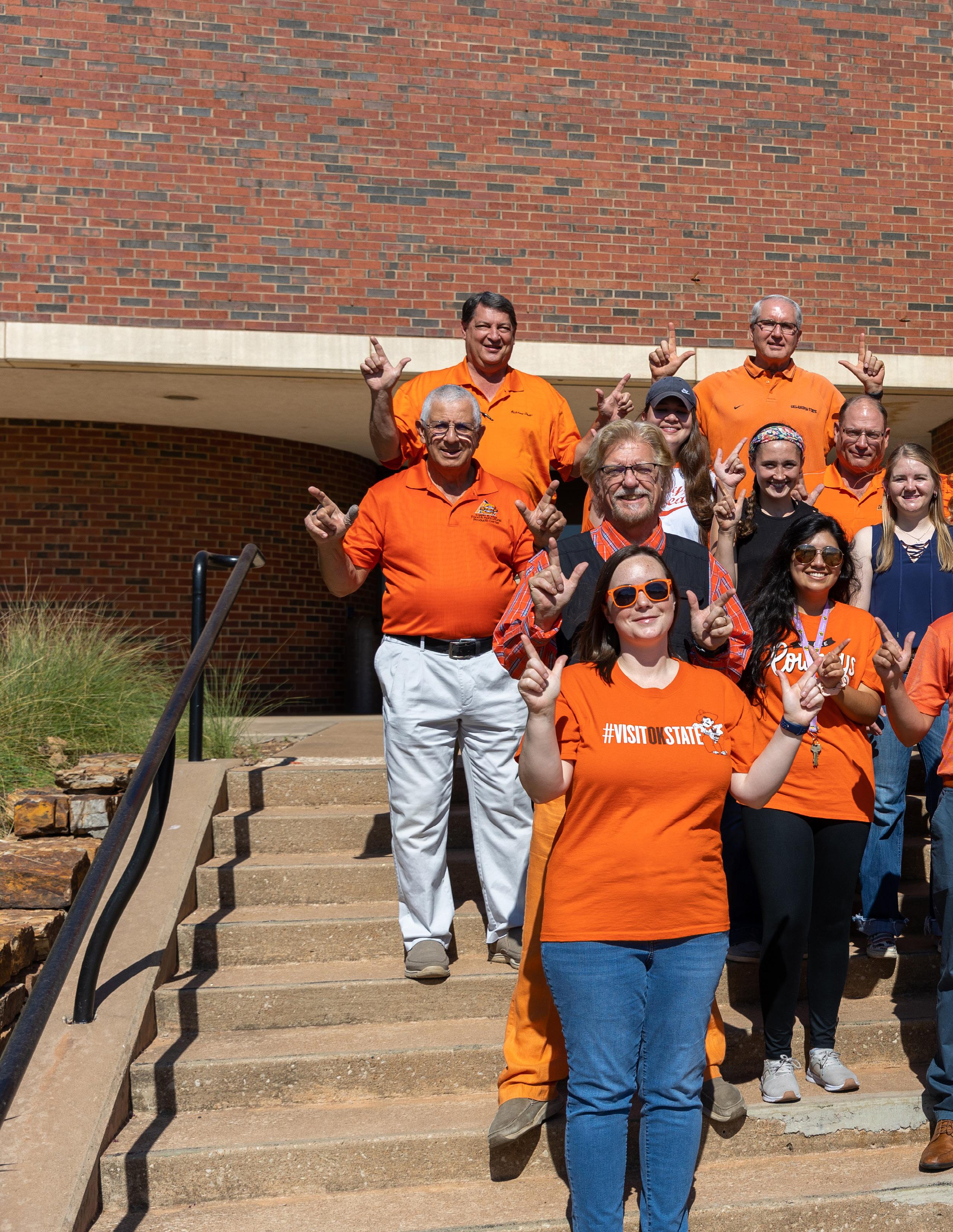
Subscribe
To subscribe, e-mail us or mail in your request. Please give us your full name and either your e-mail or mailing address.
Cowpoke News is distributed through both e-mail and mail and is available online at https://agricul ture.okstate.edu/departments-pro grams/afs/about/cowpoke-news. html.
Contact Us Editor, Rebekah Alford Department of Animal and Food Sciences
Animal Science Building Stillwater, Oklahoma 74078
www.afs.okstate.edu
Stay Connected Want to receive more information and updates about our department? Follow us on social media!
201H
405.744.8846 cowpokenews@okstate.edu
@okstateafs
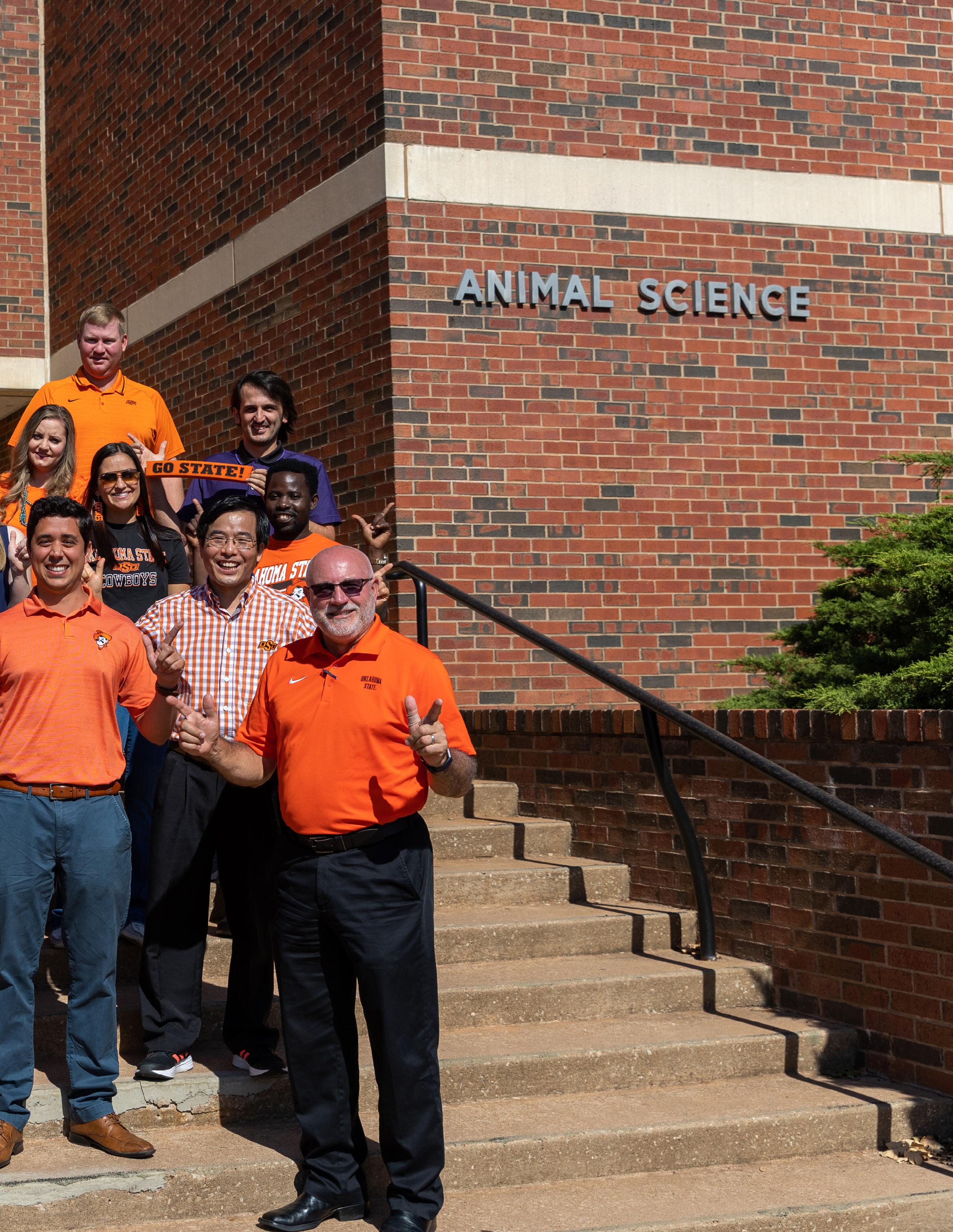
Letter from the Department Head Our Faculty, New Hires and Retirements OQBN VAC-45 cattle sale series begins in November OSU virtual fencing research advancing with $1.4 million USDA grant Ramanathan receives the Early Career Achievement Award Meet the 2022-2023 student club presidents Rancher’s Thursday Lunchtime Series brings information to beef cattle clientele and Extension educators OSU research aims to save billions for the beef industry Poor hay crop requires a sustainable winter plan Wettemann receives ASAS Morrison Award Open for business: Cowboy Meats opens retail store at FAPC Best of the Best of Stillwater ASAA Announcements/Events OSU alumna awarded Phi Kappa Phi fellowship Graduate Student Recognition Sponsors of the Department In this Edition 4 5 7 8 10 11 14 16 18 19 On the Cover Ryan Reuter is on the cover of this edition. Reuter is a professor in the OSU Department of Animal and Food Sciences. His teaching and research is focused on range beef cattle nutrition. Read more about Reuter and his research on page 8. 20 21 22 24 26 12
Letter from the Department Head
It’s exciting to write my first Cowpoke News article as the department head of animal and food sciences at Oklahoma State University. I am close to wrapping up my second month on the job, and I still wake up some mornings and pinch myself to make sure this is real and I’m not dreaming. I am absolutely honored to be here and to have an opportunity to give back to the place that helped me so much.
For those I have not yet had the opportunity to meet, I will give you a little of my pedigree. I am an Oklahoma native, being raised in Jones, Oklahoma, where I was active in 4-H and FFA primarily showing livestock, but also participating a bit in public speaking. I hold two degrees from OSU, having completed my bachelor’s degree in animal science (production option) in 1986 and my master’s in swine nutrition (under the guidance of Charles Maxwell in 1990). As an undergraduate student, I was an employee at the Swine Barn, which as many of you will know was managed by Kim Brock at that time. During the period I worked on my master’s, I served as Kim’s assistant herdsman for the Swine Barn.
After completing my master’s degree, I went to the University of Kentucky and completed my doctorate in swine nutrition in 1994, working with Gary Cromwell. I then joined the faculty in the department of animal and food sciences at the University of Kentucky in a swine Extension position and spent the next 21 years working with Kentucky’s swine producers and swine support industries. Additionally, from 2003-2015, I provided leadership and coordination for statewide youth livestock programs (livestock judging, livestock skillathon and livestock projects) as the department’s youth programs coordinator. I absolutely loved my time working in Extension.
I first became involved in administration when I was selected to serve as the director of the University of Kentucky’s Research and Education Center, an off-campus center located in Western Kentucky, in 2012. This was a 50% administrative appointment that let me get my feet wet as an administrator without having to give up all my Extension work. I stayed in this role until February 2015 when I moved back to campus to become the department chair of animal and food sciences at the University of Kentucky, a position I served in until coming back to Oklahoma in July of this year.
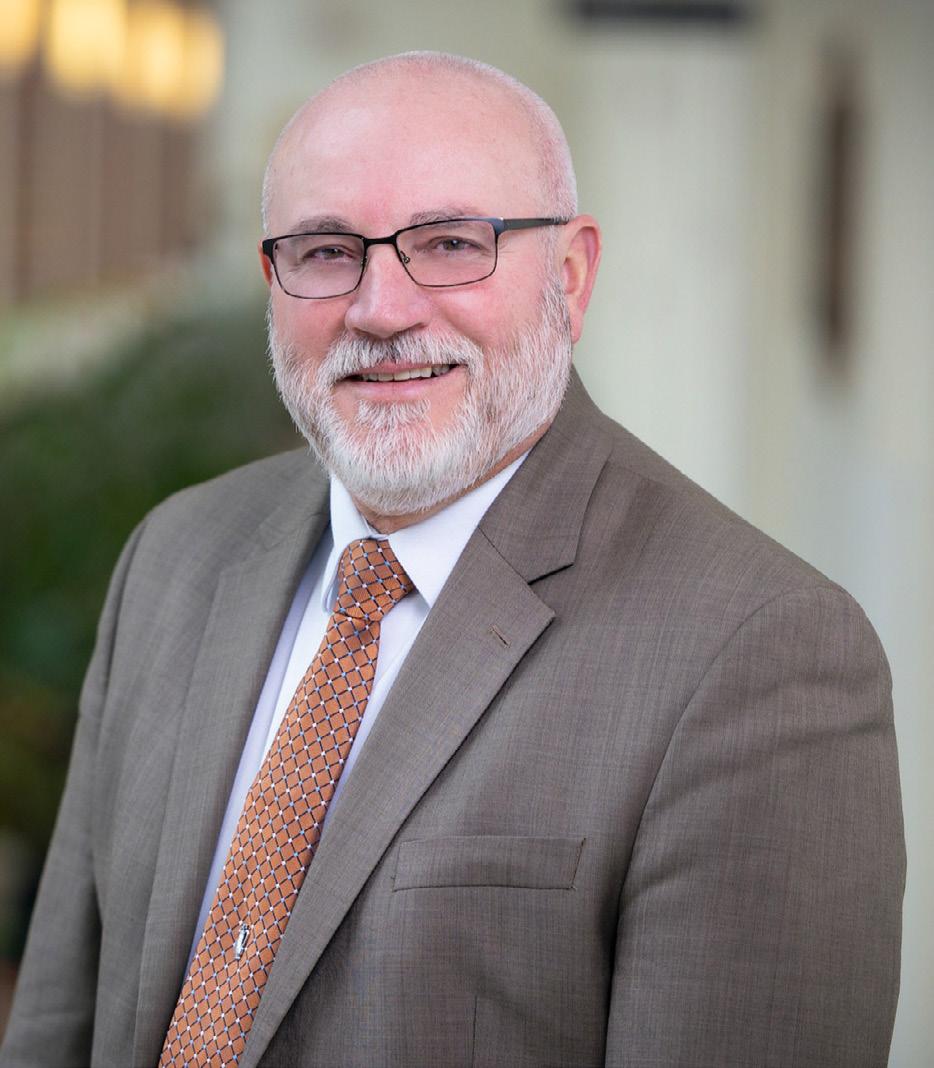
It has been a dream come true to be able to return to the department of animal and food sciences at OSU. This is truly an amazing place to work. The department has wonderful faculty and staff that are committed to the success of the department, our undergraduate and graduate students, and those that we serve through our research and extension programs. The department is blessed to have outstanding alumni (including a super active and supportive Animal Science Alumni Association) and stakeholders that are highly engaged with the department and are dedicated to helping the department remain relevant and sustainable.
One of the things that sets this department apart from others is the commitment that has been made to maintaining and supporting the purebred teaching units, judging teams and other important extracurricular activities that serve as great recruiting tools and help in the education and life-skill development of our students. The unique history and culture this department has of providing second-to-none, hands-on educational opportunities for its students (both undergraduate and graduate) while also conducting basic and applied research and offering Extension programs that have meaningful impact for stakeholders and clientele makes OSU the place of choice for students from across the U.S.
Without question, the investment this department’s faculty and staff made in me during my time spent here from 19831990 provided the foundation for all the successes I have been able to experience over the course of my career. To have the chance to come back and repay some of that investment is humbling and super rewarding. I am excited about the future of the department and look forward to meeting you at events and activities here in Stillwater or as I am out and about throughout the state. Please feel free to reach out to me any time with your thoughts and ideas, and when your travels bring you back to campus stop by my office in the Animal Science Building and say hello.
GO POKES!
Richard Coffey
4 SUMMER 2022
Our Faculty
Beck, Paul - Beef Cattle Nutrition Research & Extension
Carter, Scott - Swine Nutrition, Waste Management Research, Teaching & Graduate Coordinator
Coffey, Richard - Department Head
Cooper, Steven - Equine Teaching, Scholarship Coordinator
Crosswhite, Justin - Clinical Instructor
Crosswhite, Mellissa - Clinical Instructor
DeSilva, Udaya - Molecular Genetics Research & Teaching
Fitch, Jerry - Sheep Teaching & Extension, Teaching Coordinator
Foote, Andrew - Ruminant Nutrition Research & Teaching
Gosz, Rusty - Extension Youth Livestock Specialist
Hagen, Darren - Animal Genomics Research & Teaching
Henley, Parker - Teaching & Extension
Hiney, Kris - Equine Research & Extension
Jadeja, Ravi - Food Safety Teaching & Extension
Jaroni, Divya - Meat Safety Research & Teaching
Johnson, Mark - Animal Breeding Teaching & Extension
Lalman, Dave - Beef Cattle Nutrition Research & Extension
Mafi, Gretchen - Meats Teaching & Research
Moraes, Joao - Physiology, Research, Teaching
Muriana, Peter - Food Microbiology Teaching, Research & Extension
Pezeshki, Adel - Monogastric Nutrition Teaching & Research
Pfeiffer, Morgan - Food Science Research, Teaching
Ramanathan, Ranjith - Meat Science Teaching, Research & Research Coordinator
Reuter, Ryan - Range Beef Cattle Nutrition Teaching & Research
Salak-Johnson, Janeen - Animal Behavior & Well-Being Research & Teaching
Spicer, Leon - Reproductive Physiology Research & Teaching
Stein, Dan - Livestock Production Teaching & Extension
Wilson, Blake - Beef Cattle Nutrition Teaching & Research
Zhang, Guolong - Animal Molecular Biology Research & Teaching Buchanan, David - Animal Breeding, Teaching Coordinator Gill, Don - Beef Cattle Nutrition, Extension Horn, Gerald - Beef Cattle Nutrition
Emeriti Faculty
Kropp, Bob - Beef Cattle Nutrition, OBI Selk, Glenn - Reproductive Physiology, Extension Teeter, Robert - Poultry Nutrition Wagner, Don - Department Head Wettemann, Bob - Reproductive Physiology
Appointments
Gretchen Mafi - reappointment to the Ralph and Leila Boulware Chair II
Peter Muriana - reappointment to the Advance Food Co / SE Gilliland Professorship
Adel Pezeshki - promotion to associate professor (action grant tenure)
Ranjith Ramanathan - reappointment to the Leo and Kathy Noltensmeyer Endowed Research Professorship
Glenn Zhang - reappointment to the Ralph and Leila Boulware Chair 1
COWPOKE NEWS 5
Andrea Eddington Administrative Assistant
Andrea joined our team in August. She has worked at OSU for a number of years. She is the assistant for both our graduate student and undergraduate research programs.
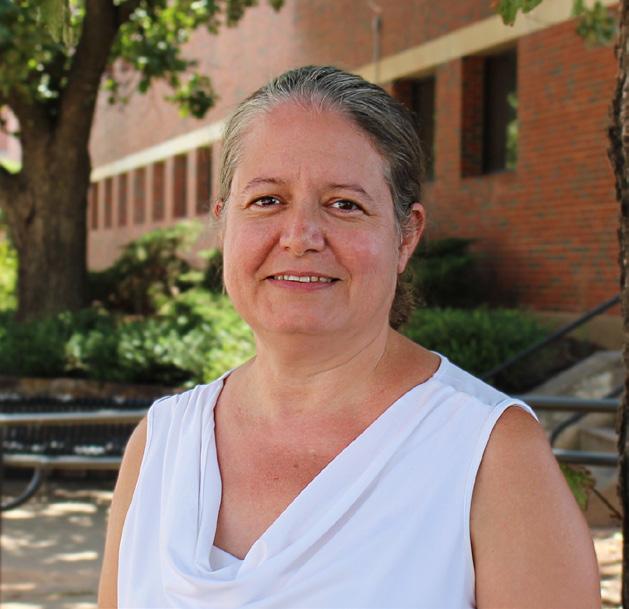
New Hires
Grant Hubbard Herd Manager
Grant is the new herd manager for the OSU Purebred Beef Cattle Center. He graduated from OSU in 2021, and has been managing a large herd of cattle in Michigan since that time. Welcome back!
Retirements
Paul Vining

OQBN Program Coordinator
Paul is an new graduate student in our department pursuing a Ph.D. in animal science with a focus in ruminant nutrition. He is also the new coordinator for the Oklahoma Quality Beef Network Program.


Kim Brock Farm Coordinator

Kim Brock was herd manager for our swine herd for several decades before becoming the farm coordinator. He has been a driving force in our sponsorship program and was very active in the Animal Science Alumni Association for many years.
Glynna Worley
Senior Administrative Support Specialist
Glynna Worley left the department
August 1, 2022. She worked for six years as an administrative assistant for our graduate program and undergraduate research coordinators.
6 SUMMER 2022
OQBN VAC-45 cattle sale series begins in November
The Oklahoma Quality Beef Network VAC-45 program will continue to host a series of certified cattle sales around the state this fall, beginning in November.
OQBN is a partnership between Oklahoma State University Extension and the Oklahoma Cattlemen’s Association. OQBN is a network of cattlemen, educators, veterinarians, industry professionals and livestock marketers committed to providing beef cattle producers with access to valueadded marketing opportunities.
“Many cow/calf producers are preparing to wean spring born calves,” said Paul Vining, OQBN coordinator. “Now is the time to order OQBN VAC-45 program ear tags.”
OQBN strives to boost communication and marketing efforts within all segments of the beef industry with goals of maintaining and improving the quality and profitability of Oklahoma cattle. Cow/calf producers who participate in the OQBN VAC-45 program receive marketing and health management certification in Oklahoma and neighboring states. Benefits include:
• Potential market premiums for preconditioned calves
• Reduced calf stress
• Improved calf immune function
• Increased calf sale weight
• Increased market demand for preconditioned calves
• Brand neutral vaccine selection (Producer and local veterinarian may select the vaccine brand to be administered. Selected vaccines must fulfill program requirements).
• Third-party verification
Calves enrolled in the VAC-45 program are eligible for a certified OQBN sale at any of the following sale barns on selected dates. The OQBN webpage lists a complete sale schedule and mandatory weaning date for each sale.
OQBN VAC-45 program sale locations:
• OKC West Livestock Market, El Reno
• McAlester Union Stockyards, McAlester
• Payne County Stockyards, Perkins
• Woodward Livestock Auction, Woodward
• Southern Plains Livestock Auction, Blackwell
• LeFlore County Livestock Auction, Wister
Cattlemen can purchase ear tags for enrollment in the program at the OQBN VAC-45 website. Participants are asked to review all program qualifications prior to purchasing ear tags and enrolling calves to ensure all requirements are met.
For more information about OQBN, the VAC-45 program and upcoming certified sales, contact Paul Vining, OQBN coordinator, at 405-744-4268 or paul.vining@okstate.edu.
 Media Contact: Gail Ellis
Media Contact: Gail Ellis
COWPOKE NEWS 7
OSU virtual fencing research advancing with $1.4 million USDA grant
Oklahoma State University researchers are taking their research on virtual fencing technology to the next level this fall thanks to a $1.4 million grant from the U.S. Department of Agriculture-Natural Resources Conservation Service.
“We’re looking at how managed grazing with virtual fencing can improve grazing distribution, pasture biodiversity and productivity, and wildlife and pollinator habitat,” said Ryan Reuter, professor of range beef cattle nutrition in the OSU Department of Animal and Food Sciences.

OSU researchers have spent the last year studying the grazing patterns of cattle through GPS-enabled collars as part of an $800,000 Environmental Protection Agency grant. The collars allow producers to not only see where their cattle are grazing, but also
manage where they graze. The collars emit two stages of auditory ques before the final prompt of a small electrical stimulus.
A pilot project in 2019 introduced the technology to obtain initial results, Reuter said. Researchers observed where a group of cattle liked to congregate for two weeks before implementing a virtual fence and exclusion zone on that spot for about 10 days. The experiment resulted in a 99% success rate at keeping cattle out of that zone.
Through the EPA grant, Reuter’s team studied the grazing habits of cattle in riparian zones (areas bordering bodies of surface water). The GPS collars were put into place at two OSU research locations and one private ranch. Researchers hope to add a second private ranch to the project this fall.
OSU’s Department of Natural Resource Ecology and Management faculty have also been involved with the project.
“I am eager to see if the costs and the analytics prove this to be a viable tool for cow-calf producers,” said Clay Burtrum, owner of Burtrum Cattle, the private ranch participant. “Technology like this allows me to move my herd from wherever I am, and that could be very beneficial to producers, especially if they are like me and have a day job in town in addition to managing a cattle operation.”
The next phase of research with USDA-NRCS funding begins this fall and will involve Reuter and his fellow scientists using the collars to manage the grazing patterns of cattle. The grant also funds conducting the same research in upland areas (land at a higher elevation).
“We’ll have an exclusion zone around the riparian area so they can’t get down in the creek, and we will do some rotational grazing where we move cattle around the pasture to control their grazing patterns,” Reuter said. “We’re going to look at whether the water runoff quality improves when we do that.”
The team hopes to learn how much time the cattle spend in areas preferred by researchers versus how often they move into areas researchers want them to avoid. The study will also show how virtual fencing improves the grasslands environment where cattle graze.
“Water quality reports from the Oklahoma Department of Environmental Quality have shown poor grazing practices are impacting lakes, rivers and streams in Oklahoma,” said Kevin Wagner, professor and
8 SUMMER 2022
director of the Oklahoma Water Resources Center, who is working on the project with Reuter. “This technology will improve the quality of grazing lands, cattle production and water quality as ground cover, and the amount of time cattle spend in critical areas will be reduced.”
Other potential benefits of virtual fencing:
Producers will have the ability to implement grazing management recommendations more easily without building physical fence.
Depending on a producer’s stocking rates, the system could be more cost effective than building and maintaining physical fence. The cost of technology declines over time, so virtual fencing has the potential to be even more cost effective in the future.
Virtual fencing gives producers the ability to exercise grazing management
in areas where it would be difficult to build physical fence due to the terrain or soil type.
For producers less able to do the physical work, the technology saves them from having to build fence and manage cattle grazing as often in person.

Producers with outdated fencing that cattle can easily get through could use virtual fencing as a backup to their physical fencing.
It allows producers to know where all their cattle are in real time, which can alert producers to problems with their cattle whether they are onsite or not.
“This virtual fencing system is probably going to go commercial within the three years we’re doing this project,” Reuter said. “There will be a lot of producers interested in applying it and who will have questions about it, so we will likely keep it as part of the
management system at our research ranch so we can answer questions producers have about it.”
This work is supported by the Conservation Innovation Grants program at USDA’s Natural Resources Conservation Service.
This project has been funded by the U.S. Environmental Protection Agency under assistance agreement MX-02D00721-0 to Oklahoma State University. The contents of this document do not necessarily reflect the views and policies of the EPA, nor does the EPA endorse trade names or recommend the use of commercial products mentioned in this document.
Media Contact: Alisa Boswell-Gore
COWPOKE NEWS 9
Ramanathan receives the Early Career Achievement Award
Ranjith Ramanathan, professor of meat science in the Oklahoma State University Department of Animal and Food Sciences, is a recipient of the Early Career Achievement Award from the American Society of Animal Science.

Ramanathan received the award at the 2022 ASAS-CSAS Annual Meeting & Trade Show held in June at the Oklahoma City Convention Center.
“I am honored to receive this award from one of the largest organizations in animal science,” Ramanathan said.
The ASAS Early Career Achievement Award recognizes young scholars that exemplify the work of the ASAS mission, which is to foster the discovery, sharing
and application of scientific knowledge concerning the responsible use of animals to enhance human life and well-being.
“Without the help of my students, colleagues, mentors and strong support from department and college administrators, nothing would have been possible,” Ramanathan said.
Ramanathan has been a faculty member in the OSU Department of Animal and Food Sciences since 2012 and holds the Leo and Kathy Noltensmeyer Endowed Professorship. Ramanathan’s research focuses on factors influencing fresh meat quality, specifically postmortem biochemistry and meat color. He currently teaches
five undergraduate and graduate-level food science courses.
Ramanathan graduated with a bachelor’s degree in veterinary and animal science in 2004 from Kerala Agricultural University. He also earned a master’s degree and doctorate in animal science from the University of Connecticut in 2012.
Written by Elizabeth Perdue
10 SUMMER 2022
Meet the 2022-2023 student club presidents








Block & Bridle Club Dairy Science Club Food Science Club

COWPOKE NEWS 11
Kaitlin Taylor Milton, Tennessee Ali Bowman Glencoe, Oklahoma
Elizabeth Pribil Hennessey, Oklahoma
Grace Harris Horatio, Arkansas
Rylan Jordan Mason, Texas
Katelyn Leibhart Imperial, Nebraska
Carly Clark Edmond, Oklahoma
Megan Newlon Hugoton, Kansas
Mickinzi Ferguson Walkersville, Maryland
Meat Science Association Oklahoma
Collegiate
Cattlemen’s Association Oklahoma
Collegiate
Cattlewomen’s Association
Pre-Vet
Club
Ranch Horse Team
Swine Club
Rancher’s Thursday Lunchtime
Series brings information to beef cattle clientele and extension educators

Over two years ago, the COVID-19 pandemic impacted many different facets of our daily lives. This was especially true for anything requiring in-person participation.
This caused a major issue for Extension Outreach. How would they continue to provide important and time sensitive information without being able to meet with people?
“During the early stages of the Covid Pandemic, it was apparent that inperson extension educational programs would not be possible, and of course, we didn’t know for how long,” said David Lalman, beef cattle Extension specialist.
Lalman met with Drs. Rosslyn Biggs and Paul Beck to discuss options for providing educational information to clientele and extension educators. They were already used to having a virtual meeting each month with
their Oklahoma State University beef Extension team.
“Since state and area specialists were already familiar with the concept of virtual meetings, the Rancher’s Thursday Lunchtime Series was a natural progression from those monthly programming meetings,” said Lalman.
The Rancher’s Thursday Lunchtime Series is an educational program where experts and the public meet for one hour at noon on Thursdays to address various topics related to beef cattle. A series consists of four to eight consecutive sessions, with different experts joining in to speak at each session.
“It allowed us to ‘bring in’ nationally known experts to address specific topics and at the same time, involve state, area and county educators within our own Extension network,” said Lalman. “Producer, academic
and industry experts would normally only be available as invited speakers during conferences or symposiums. The virtual webinar format expanded our clientele’s access to a more diverse group of experts without having to travel to an in-person meeting and without the speaker having to travel.”
The series hosts presenters from OSU, like area livestock specialists and Extension educators, while also bringing in outside experts that attendees may not normally get to interact with.
“It seems that as time has gone by, people are getting more comfortable asking questions,” said Lalman. “We’ve had topics where the Q&A session has lasted for more than 30 minutes, for example.”
The webinars cover relevant and important subject matter. Past topics the series has covered include:
12 SUMMER 2022
Alfalfa Management for Beef Cattle Production
Cattle Health
Cattle on Wheat and Small Grains
Controlling Winter Feed Costs
Forage Management
Growing Calves Without Wheat Pasture
Heifer Selection, Development and Breeding
Managing Cattle and Forages in a Dry Weather Pattern
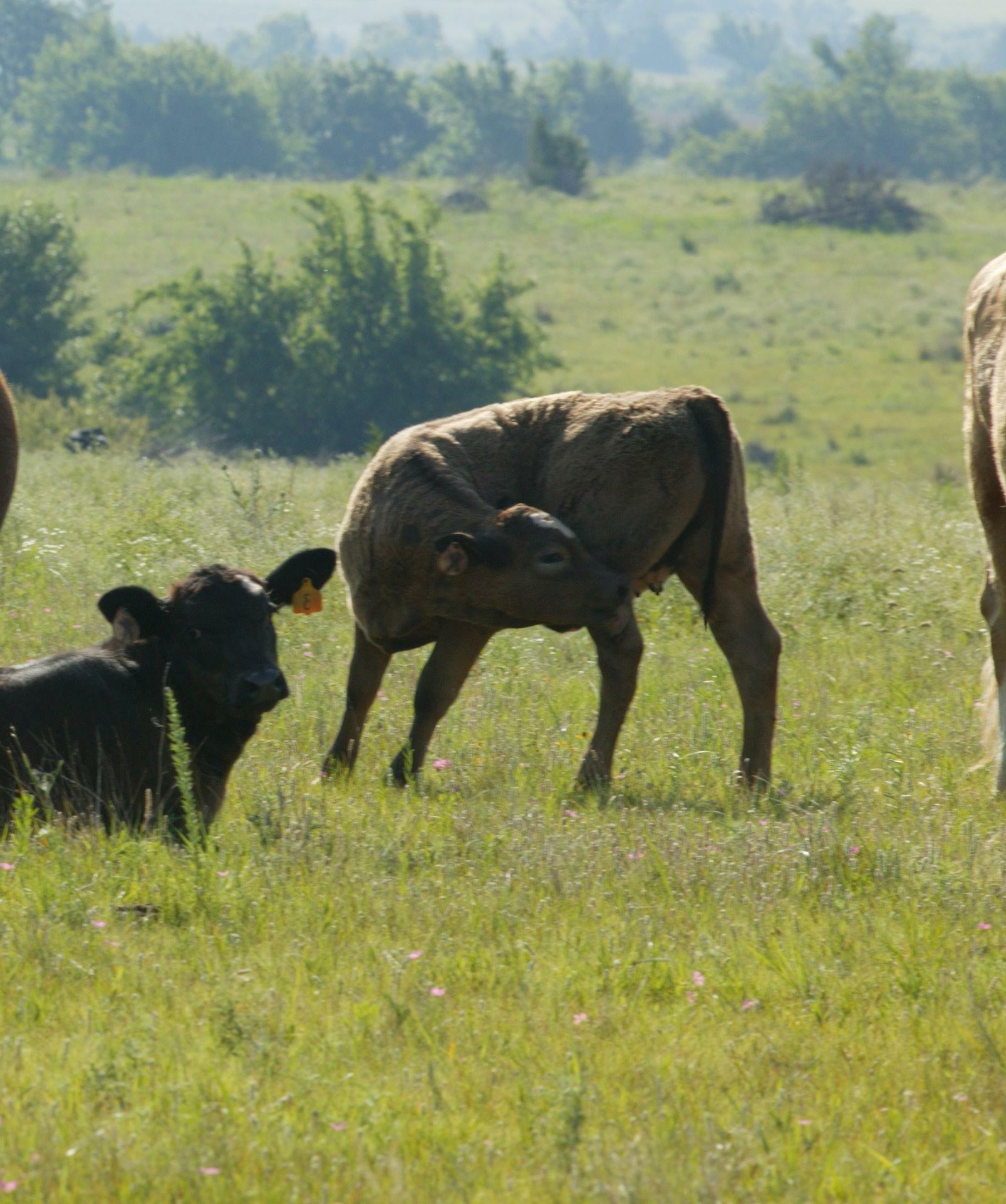
Preparing for Extended Drought
Reducing Costs in a Cow/Calf Operation
Show Cattle Fundamentals
Vac45 Program Opportunities and Consideration
session is recorded and posted
beef extension website for
public to view. In time, the webinar videos were viewed to a much greater extent compared to live participation, Lalman said.
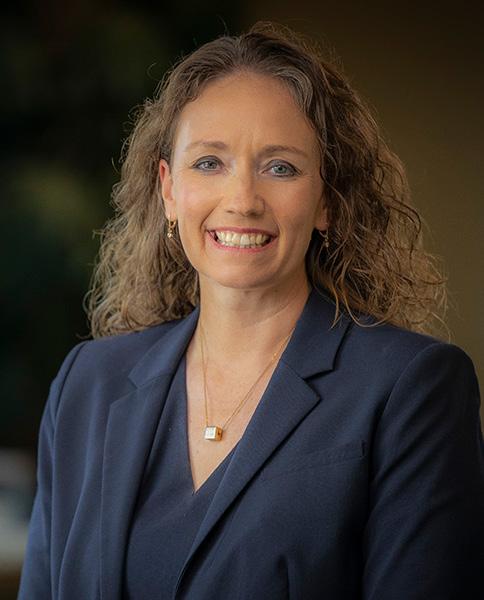

“We generally have anywhere from 60 to 120 people attend live,” said Lalman. “However, one of the recorded videos has been viewed 10,400 times as of August 2022. We’ve never had an Extension conference with 10,000 people in attendance.”
The series was originally created out of necessity, but has offered the OSU beef cattle Extension team a new way to reach more people while providing information participants may not hear about otherwise.
The next series will be held later this fall. For more information about the Rancher’s Thursday Lunchtime Series or to view recorded webinars, visit beef. okstate.edu.
 Written by Rebekah Alford
Written by Rebekah Alford
•
•
•
•
•
•
•
•
•
•
•
•
Each
to the
the
Dave Lalman
Paul Beck
Rosslyn Biggs
COWPOKE NEWS 13
OSU research aims to save billions for the beef industry

14 SUMMER 2022
Scientists in the Oklahoma State University Department of Animal and Food Sciences are working hard to stop the waste of billions of dollars of beef each year.
The U.S. beef industry loses $3 billion annually to meat discoloration. When beef is brown on the surface, it is discounted in price, and extensive discoloration leads to people throwing nutritious food in the trash.
Why does meat turn brown?
Most people associate the bright, cherry red color of meat with freshness, but brown discoloration doesn’t mean your beef is bad. The discoloration is simply beef reacting to longterm exposure to oxygen.
When oxygen attaches to the protein myoglobin in muscles, oxymyoglobin forms and gives meat a bright cherry red color. When oxymyoglobin continues to be exposed to oxygen, it turns into metmyoglobin. This process is called oxidation, which causes a chemical reaction similar to apples or potatoes turning brown when exposed to air.
What’s been done?
Gretchen Mafi, professor of meat science in the animal and food sciences department, conducted research using oxygen scavengers, small iron pouches that can be placed inside the bags used for beef retail transportation. The iron pouches remove oxygen, and therefore, lengthen the shelf life of the meat.
OSU scientists did not invent this method of packaging, said Mafi, but they have been testing the method for a private company to determine its effectiveness. In recently completed research, beef maintained its bright, red color for up to 23 days after being packaged with this process.
Along with the research, Morgan Pfeiffer, assistant professor of animal and food sciences, has been studying how long it takes meat to reach varying levels of discoloration and what people consider too much discoloration.
“We’re trying to get it down to the hour when consumers would say they would no longer purchase that meat,” Pfeiffer said.

Ranjith Ramanathan, an OSU meat quality associate professor, has focused his research on a condition called dark-cutters in which beef fails to have a bright red color.
Ramanathan and his research partners asked the question of why the meat of some cattle has a darker color when harvested by looking at protein and metabolite levels in dark cutting beef. They found these levels were different in darker red meat. Glycogen levels and mitochondria, which produces energy, are also different in darker beef compared to brighter red beef.
With this knowledge, producers can track whether specific cattle will exhibit dark meat or bright, red meat.
“Stress, heat extremes, changes in weather and certain management practices can increase dark-cutting incidents,
so if you can figure out which cattle are more prone to dark cutting at a genetic level, you can put management practices in place to help with that,” Mafi said.
What’s happening now?
Predicting which cattle are more prone to dark cutting meat with a high level of confidence is something Ramanathan and Mafi are still working toward.
Ramanathan said researchers are continuing to look at these protein and metabolic levels before applying their knowledge at the production level by studying the biological markers of cattle that relate to these differences.
In other research, Ramanathan and his colleagues are trying to determine if there are electrochemical factors that play into the discoloration of beef, pork and chicken by researching the properties in each of these meats that cause different oxygen levels, pH conditions and temperature. In collaboration with the OSU Department of Chemistry, they are also developing electrochemical sensors that can check antioxidant levels in beef extracts to determine if the beef will turn brown more quickly.
Meanwhile, Ramanathan, Mafi and Daqing Piao of the OSU College of Engineering, Architecture and Technology are attempting to develop a method to detect meat discoloration internally before it reaches the surface of the meat. The two scientists and their colleagues will also study the absorption and emission of light within beef products and its association with beef color change to develop storage strategies and other decision-making tools.
Media Contact: Alisa Boswell-Gore COWPOKE NEWS 15
Poor hay crop requires a sustainable winter plan
The drought has made it difficult for ranchers to stockpile hay for the winter season ahead.
Hay yields are much lower in 2022 than they were last year, and in areas of the state with the worst drought, hay season is non-existent.
“Producers don’t have anything to bale up,” said Gary Strickland, Jackson County Oklahoma State University Extension director and agriculture educator. “They may have gotten one cutting of alfalfa, and maybe a second if it was under irrigation.”
In the dryland fields of the southwest region, summer forages, such as sudan grasses and pearl millets, have emerged with very little growth. Strickland took a tour of five regional counties a couple weeks ago and found field after field of burnt up grasses from the drought and extreme heat.
“The feeding toxicities associated with sudan grasses and sorghum in drought is also a concern,” Strickland said. “We’ve had very little wheat straw hay baled up due to the high wheat acre abandonment, and irrigated Bermudagrass is not producing the tonnage it would normally produce.”
Dryland Bermudagrass needs rain and cooler temperatures to recover before winter. The current environment of relentless heat into the evening hours has not allowed grasses to repair overnight from the heat of the day.
“A lot of producers say they don’t have the hay to support their herds, and they have had to take cattle off pastures earlier than usual to prevent cattle from grazing perennial grasses too low,” he said.

Southwestern Oklahoma is not the only area in crisis.
“Our producers are talking about feeding hay in the middle of August instead of starting in the middle of October,” said Chad Webb, Noble County OSU Extension director and agriculture educator. “That’s two months of feeding with less hay.”
The strain of high input costs and low forage supplies is tough on ranchers. Less hay is available to purchase in drought years, and hay prices can contribute to steep input costs. Webb said some ranchers in his county are considering planting wheat for winter forage. Others are reducing their operation’s stocking rates to levels that can be sustained through the rest of the summer and into fall.
16 SUMMER 2022
Paul Beck, OSU Extension beef nutrition specialist, offered the following tips for developing a sustainable herd plan for winter:
• For producers who usually keep or purchase stocker calves, sell them early or market them to a grow yard or feedlot. When forage production is limited, these calves can reduce the culling of cows.
• Sell replacement heifers. These females will not provide a marketable calf for over a year.
• Cull the herd to a reasonable number by selling cows that are old, less productive or that require higher nutrient levels.
• Cross-fence the farm now before starting to feed hay. Subdividing the farm allows pastures to rest
and recover through rotational grazing.
• Determine how much hay you have and how much can be fed daily for the expected feeding period. Feeding as little as 10 pounds daily per cow may require the purchase of additional hay or roughage.

• Test hay and other roughage sources to determine protein and energy amounts. OSU Extension specialist Brian Arnall discusses baling summer crops for an alternative forage on OSU Agriculture’s television show, SUNUP.
• Consider planting warm season annuals as a grazing crop in the late summer to fill early fall forage gaps. Warm season
annuals can produce four to five tons of dry matter per acre in 45 days when planted in late summer.
• Plant cool season annual grasses in pastures.
• Balance a supplement or feeding program that makes sense for the operation.
• Consider feeding monensin to beef cows. It has been shown to decrease forage intake 8% without impacting cow bodyweight or body condition.
Learn more about preparing cattle for extended periods of drought through the OSU Extension Rancher’s Thursday Lunchtime Series webinars.
Media Contact: Gail Ellis
COWPOKE NEWS 17
Wettemann receives ASAS Morrison Award
Robert Wettemann, emeritus faculty member, recently received a national award from the American Society of Animal Science. The prestigious Morrison Award is presented to one ASAS member each year who has conducted outstanding research that has significant importance in the field of livestock production. The award includes a watch, plaque and monetary award.

“Dr. Wettemann’s research in animal science over the years at OSU established the use of body condition to evaluate supplemental feeding of beef cows and that hypothalamicpituitary dysfunction causes anestrus,” said Leon Spicer, professor in the department of animal and food
sciences. “His studies determined that nutrient intake and body energy reserves are major factors that determine the length of the interval from calving until cows exhibit estrus.”
ASAS members nominated for the award must have made a meritorious scientific contribution or discovery in research in the field of animal science. Wettemann’s research focused on reproduction and endocrine function of beef cattle, identification of biomarkers and determination of the effects of prenatal nutritional programming of the bovine fetus on mechanisms that regulate growth, development and performance.
“His research team developed a body condition scoring system to
predict whether beef cows will become pregnant during the breeding season,” said Spicer. “This BCS system is used extensively by cattlemen and results in at least a five percent increase in pregnancy rates, which has been estimated to generate an additional 1.5 million calves annually.”
Wettemann worked in the OSU Department of Animal and Food Sciences for 42 years. During his career, he had more than 620 publications and 41 semesters of teaching experience. He has been a member of many honor societies and has received numerous awards.
Written by Rebekah Alford
18 SUMMER 2022
Open for business: Cowboy Meats opens retail store at FAPC
When Joel Jackson was hired as the meat pilot plant manager at the Robert M. Kerr Food and Agricultural Products Center, his goal was to open a Cowboy Meats Retail Store. Available to the public, the Cowboy Meats Retail Store is now open 1-5 p.m. every Friday at FAPC.
“We had a great opening day at the Cowboy Meats Retail Store,” Jackson said. “I was excited to meet many of the new customers and hear about their connection to the university and FAPC. While being new to Stillwater, I’ve noticed the Oklahoma State University community, alumni and the city of Stillwater support the activities, programs and events at the university.”

Special orders are welcomed by Cowboy Meats throughout the week, and Cowboy Meats is now taking orders for beef sides and quarters, in addition to whole and half lambs.
The retail store sells a variety of local meat including ribeye steaks, filets, ground beef and beef brisket. Three flavors of smoked sausage, including smoked pork, no sage and cheddar jalapeno, are among the featured local products available for purchase.
“The support of Cowboy Meats helps sustain livestock judging, meat judging, meat science and food science courses, in addition to the student labor at FAPC,” Jackson said. “The students are an integral part of the operations at FAPC and that includes the new retail store.”
Students assist with the harvest, fabrication, further processed products (such as the smoked sausages, bacon and boudin), packaging, labeling, marketing and sales.
“Without the students, the retail store would not be possible,” Jackson
said. “I hope the Cowboy Meats Retail Store becomes a go-to for high-quality, locally processed meats and meat products.”
The Cowboy Meats Retail Store is located on the northwest corner of FAPC at Dock 4. Free temporary parking is available to all customers. The Cowboy Meats Retail Store only accepts checks and credit cards. For more information, call 405-744-MEAT.
FAPC, a part of OSU’s Division of Agricultural Sciences and Natural Resources, helps to discover, develop and deliver technical and business information that will stimulate and support the growth of value-added food and agricultural products and processing in Oklahoma.
Media Contact: Kirsten Hollansworth
COWPOKE NEWS 19
Best of the Best of Stillwater
Professor Udaya DeSilva is a favorite among students at Oklahoma State University. He is well-known for his caring heart and sense of humor.

On the “Rate My Professors” website, he has a 4.1 rating with 93% of students saying they would take his class again. His top tags include hilarious, respected and caring.
Several years ago, DeSilva created a program to offer food options for students having financial difficulties. The “feed trough” as it was nicknamed allows people to donate food so students can take what they need.
DeSilva was recently voted the “Best Professor” in a 2022 publication from
Stillwater News Press. Each year, readers of the newspaper vote for their local favorites in more than 100 categories.
DeSilva recently made history when he became the first person at Oklahoma State University to win a Jefferson Science Fellowship by the National Academies of Science, Engineering and Medicine. The fellowship program is designed to further build expertise within the U.S. Department of State and U.S. Agency for International Development (USAID) in the fields of science, technology and engineering.
DeSilva is part of the 2022-2023 class of Jefferson Science Fellows and
will be working for USAID for one year. He has relocated with his wife, Rupi, to Washington D.C. and will be returning to Stillwater to continue his work at OSU at the end of the one year agreement.
DeSilva has worked at Oklahoma State University for over 21 years. He teaches and conducts research in the fields of genetics, gemomics and molecular biology.
Learn more about Udaya DeSilva by visiting experts.okstate.edu/udaya. desilva/about.
Written by Rebekah Alford
20 SUMMER 2022

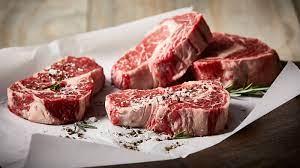
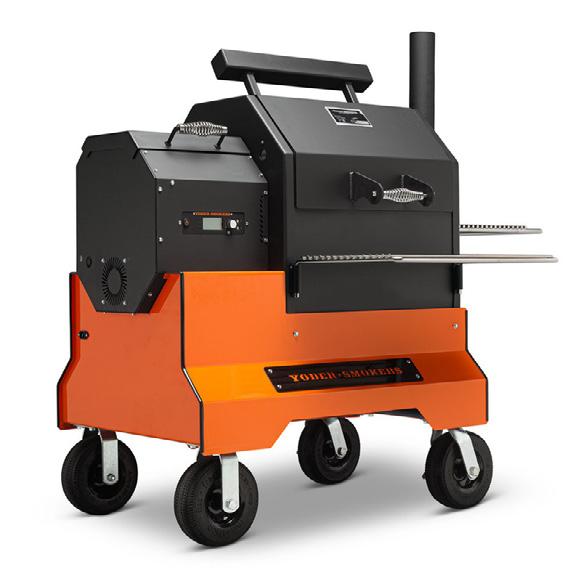


COWPOKE NEWS 21 Purchase Tickets Now! D o n ' t m i s s o u t o n a c h a n c e t o w i n t h e s e p r e m i e r i t e m s a n d s u p p o r t a n i m a l a n d f o o d s c i e n c e s t u d e n t s c h o l a r s h i p s . T h r e e w i n n e r s w i l l b e d r a w n d u r i n g t h e A S A A G a l a ( y o u d o n o t h a v e t o b e p r e s e n t t o w i n ) a n d m a y s e l e c t f r o m t h e f o l l o w i n g p r i z e s : C u s t o m H a n d m a d e L u x u r y O S U S t e a k K n i f e S e t Y o d e r S m o k e r Y S 4 8 0 S C o m p e t i t i o n P e l l e t G r i l l $ 1 , 0 0 0 w o r t h o f U S D A P r i m e S t e a k s F o r m o r e i n f o r m a t i o n o n t h e t a i l g a t e o r t o p u r c h a s e r a f f l e t i c k e t s v i s i t w w w . A S A A g a l a . g i v e s m a r t . c o m , s c a n t h e Q R c o d e o r c a l l 4 0 5 . 7 4 7 . 1 9 7 7 . A S A A R A F F L E A p r i l 1 5 , 2 0 2 3 | T i c k e t s $ 1 0 0 e a c h O c t o b e r 8 | O S U v s . T e x a s T e c h N o r t h w e s t c o r n e r o f B o o n e P i c k e n s S t a d i u m , s o u t h o f t h e W e s W a t k i n s C e n t e r T a i l g a t e w i l l b e g i n 3 h o u r s p r i o r t o k i c k o f f Join the Animal Science Alumni Association for a Cowboy Tailgate
OSU alumna awarded Phi Kappa Phi fellowship
Oklahoma State University alumna Amanda Bolinger was recently awarded a Phi Kappa Phi fellowship that will allow her to pursue her studies in veterinary medicine.

Bolinger graduated Summa Cum Laude from OSU in May with an Honors College degree in Animal Science from the Ferguson College of Agriculture.
While at OSU, Bolinger supplemented her coursework with undergraduate research in the Comparative Exercise Physiology Laboratory in the College of Veterinary Medicine, focusing on equine skeletal muscle mitochondrial physiology under the guidance of Dr. Michael Davis.
She also served as a teaching assistant in the Department of Animal
and Food Sciences and as an intern with Equine Sports Medicine and Surgery in Ruidoso Downs, New Mexico. In the fall of 2021, Amanda was selected as an institutional nominee for both the Rhodes and Marshall Scholarships.
And now she has been awarded a Phi Kappa Phi Fellowship.
“This Fellowship is an incredible personal achievement,” Bolinger said. “I am truly honored to be recognized among such a talented group of individuals on a national level.”
Bolinger has a sustained history of leadership and service. Her most significant contribution, however, is her volunteer work at Turning Point Therapeutic Riding, an accredited
therapeutic horseback riding center. Amanda dedicated four years of service to the center, where she worked with the horses and saw to the safety and education of the children and special needs populations the organization serves.
Amanda has been accepted to the Kansas State University College of Veterinary Medicine in Manhattan, Kansas, where she plans to earn her a doctoral degree in veterinary medicine.
Bolinger is motivated by her desire to become a talented veterinarian, she said.
“By choosing to put forward nothing less than my best, I firmly believe that I am choosing my future. Someday soon, I will have patients whose lives will rely on my abilities,” she said.
Her professional goals are to become an authority on equine musculoskeletal conditions within the veterinary community.
“Achieving this goal will be the product of a lifetime of learning, growing and making the best of every opportunity,” she said.
The Phi Kappa Phi fellowship is part of a long-standing tradition. In 1897, 10 seniors, two faculty members and the president of the University of Maine founded an honor society open to topranking senior students regardless of academic discipline or gender.
“Phi Kappa Phi is the oldest Greek letter honoree that accepts all majors,” said Dr. Keith Garbutt, interim dean for the College of Arts and Sciences. “This is an extremely prestigious group to be part of.”
He said not every institution can have a Phi Kappa Phi chapter OSU’s chapter has been around for over 100 years, dating back to 1920.
Nationally, there are now just over 325 Phi Kappa Phi chapters, with more
22 SUMMER 2022
being added each year, making Phi Kappa Phi the oldest, largest and most selective collegiate honor society that initiates four-year college graduates and advanced graduate students from every academic discipline.
“This is the sort of credential that shows somebody has done well, academically — they’ve taken a broad array of courses and are in the top of their class. So having it on a resume is definitely a plus,” Garbutt said. “But the other plus is that they do offer scholarships. They are competitive obviously, once you start with a group of students who are already considered the top and then you offer competitive scholarships. When we get one like this, that’s wonderful. And it speaks very, very highly of Amanda, and rightly so.”
Garbutt has worked with Amanda and describes her as greatly intelligent, outgoing and caring.
“She just has a presence, which is quite remarkable,” he said. “Her personality, intelligence … she really connects with people and she comes from a very, very small place in Oklahoma, and she’s an absolute credit to it.”
Bolinger came to OSU from Beaver, Oklahoma, as a member of the inaugural class of Oklahoma State Scholar Society Fellows, a program developed to recognize and reward Oklahoma’s highest achieving students based on their academic success, service record and strength of leadership.

In addition to the support of her parents and friends, Bolinger mentioned the benefits of mentorship from several individuals who were instrumental in obtaining the fellowship: Dan Stein (associate professor, OSU Department of Animal and Food Sciences), Udaya DeSilva (professor, OSU Department of Animal
and Food Sciences, Michael Davis (professor and Oxley Endowed chair, Department of Physiology, OSU College of Veterinary Medicine), and Clayton McCook (DVM, Equine Sports Medicine and Surgery).
“I have been so blessed to have access to a fantastic support system at OSU and in my personal life full of
people that inspire, encourage and challenge me to strive to reach my greatest potential,” Bolinger said. “I could never have accomplished all that I have without them.”
Media Contact: Harrison Hill
“ By choosing to put forward nothing less than my best, I firmly believe that I am choosing my future. ” - Amanda Bolinger
Photos by Ariel Elena Photography
COWPOKE NEWS 23
Kaylee Rumbaugh presents research at multiple meetings
Kaylee Rumbaugh presented her research, titled “Evaluation of lactic acid bacteria for a direct-fed-microbial against shigatoxigenic Escherichia coli in food animals,” at the annual meeting of International Association for Food Protection (IAFP) in Pittsburg, Pennsylvania, from July 30 to August 3, 2022.

She also presented her research at the OSU Undergraduate Research Symposium held on April 19, 2022, at the Conoco Phillips Alumni Center and at the Food and Agricultural Products Center Research Symposium held in Stillwater, Oklahoma, on March 8, 2022, where she received second place for her poster presentation, titled “Evaluation of Lactobacillusacidophilus strains for acid and bile tolerance and inhibition of Escherichia coli O157:H7.”
Kaylee is now pursuing an M.S. degree in food science. She is being advised by Divya Jaroni.
Parniyan Goodarzi selected to attend Evonik seminar
Parniyan Goodarzi was selected to attend the 7th Doctoral Student Seminar organized by Evonik. She will be traveling to Palms, South Carolina, on October 13, 2022, where she will receive an introduction to Evonik, discuss their research and network with other students and professionals. The cost of the trip will be covered by Evonik.
Parniyan is a graduate student at Oklahoma State University pursuing her Ph.D. in animal science with a focus in nutrition. She is being advised by Adel Pezeshki.

24 SUMMER 2022
Morgan Denzer receives multiple AMSA awards

Morgan Denzer, a doctoral student in Ranjith Ramanathan’s lab, was selected for both the Robert Cassens Ph.D. Scholar Award and the C. Boyd Ramsey RMC Scholar Award from the American Meat Science Association. Morgan received the awards at the Reciprocal Meat Conference in Des Moines, Iowa. These awards recognize the exemplary achievements of graduate students in research, teaching and mentoring.
Morgan is pursuing her Ph.D. in food science. She is being advised by Ranjith Ramanathan.

Thank You!
To the following sponsors of the OSU Department of Animal and Food Sciences



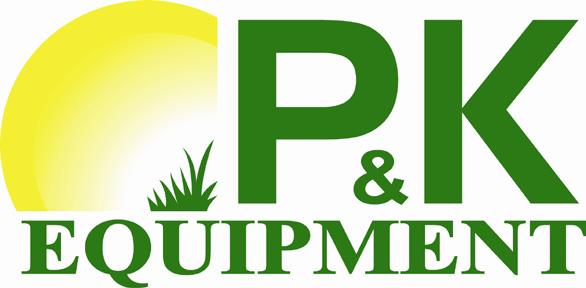

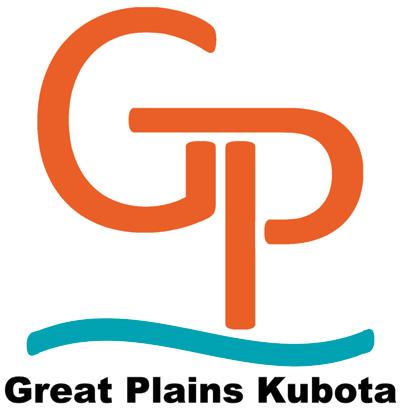

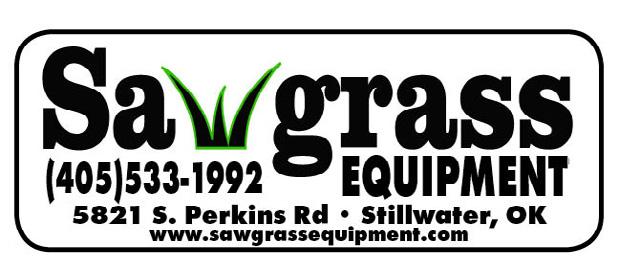








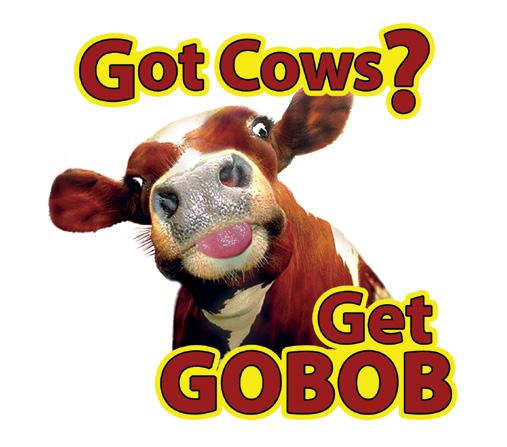



26 SUMMER 2022
The Oklahoma State University Department of Animal and Food Sciences has distinguished programs in teaching, research and Extension. We offer two majors within our department; animal science and food science. Though we are one of the largest departments on campus, we have a small community feel.

Our teaching facilities allow students to gain hands-on experience and apply concepts learned in the classroom to realworld scenarios, whether in class or as a student employee. Our farm units house quality livestock.

Learn more about our department online at afs.okstate.edu
Oklahoma State University, as an equal opportunity employer, complies with all applicable federal and state laws regarding nondiscrimination and affirmative action. Oklahoma State University is committed to a policy of equal opportunity for all individuals and does not discriminate based on race, religion, age, sex, color, national origin, marital status, sexual orientation, gender identity/expression, disability, or veteran status with regard to employment, educational programs and activities, and/or admissions.
For more information, visit https://eeo.okstate.edu.
This publication, issued by Oklahoma State University as authorized by the Vice President of the Division of Agricultural Sciences & Natural Resources, was printed at a cost of $721 for 250 copies.
The information given herein is for educational purposes only. Reference to commercial products or trade names is made with the understanding no discrimination is intended and no endorsement by the Cooperative Extension Service is implied.

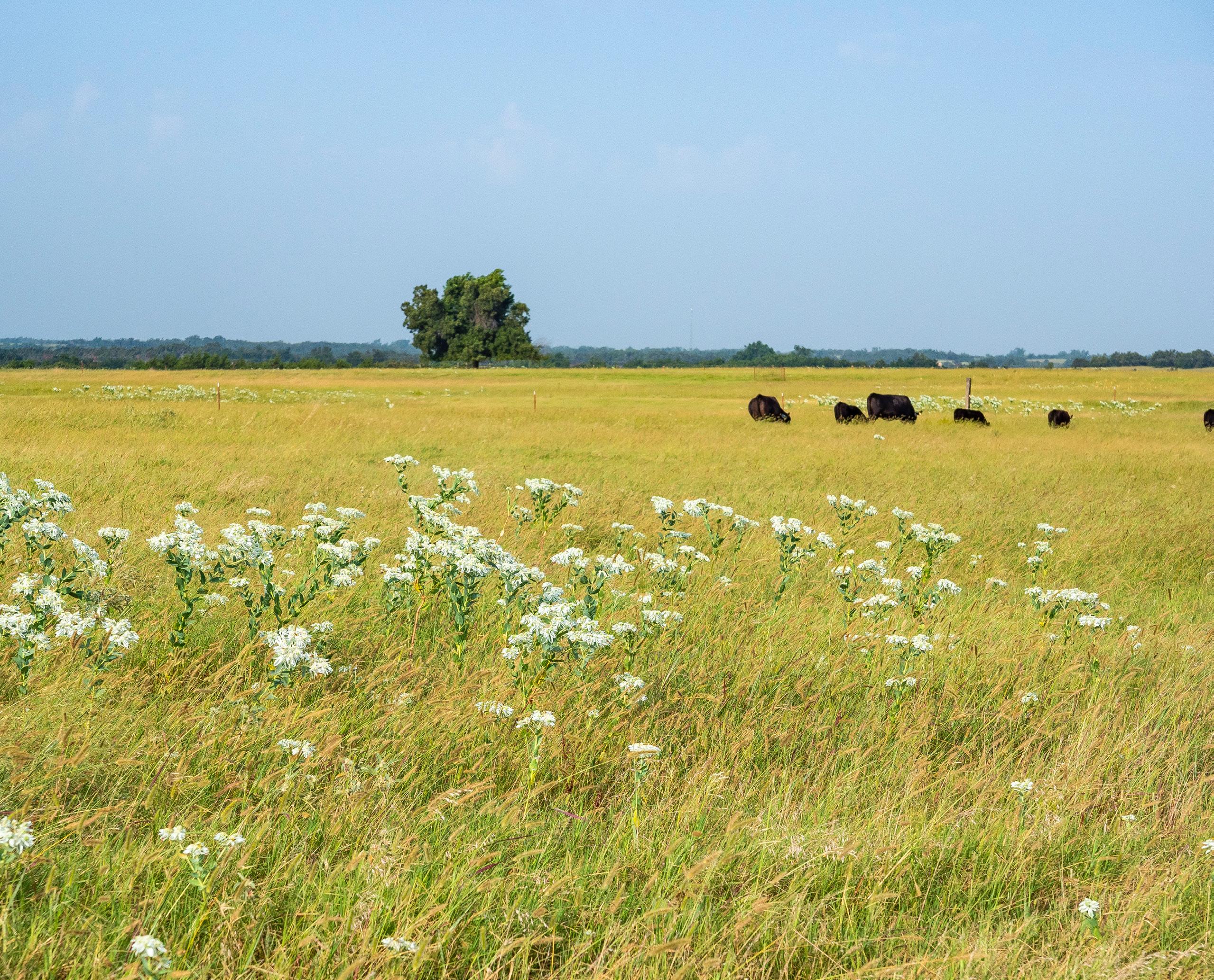
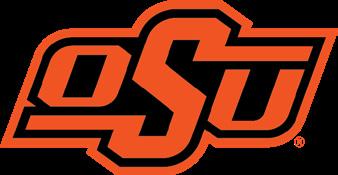
Cowpoke News Oklahoma State University 201H Animal Science Stillwater, OK 74078-6065










 Media Contact: Gail Ellis
Media Contact: Gail Ellis
















 Written by Rebekah Alford
Written by Rebekah Alford










































